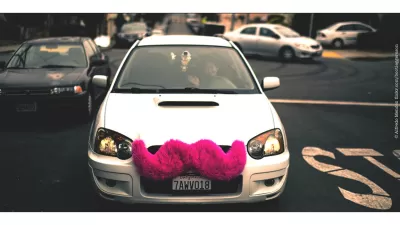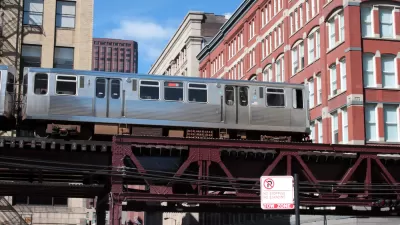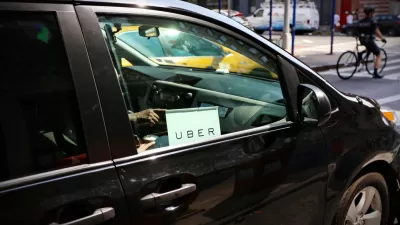According to a new report from the Center for American Progress, technology network companies like Uber and Lyft offer a unique opportunity for low-income users to connect with transit routes and on to greater economic opportunities.

Kevin DeGood, director of infrastructure policy at the Center for American Progress, and Andrew Schwartz, research associate on economic policy at the Center, have written a report exploring the potential of transportation network companies (TNCs) to provide social equity with access to mobility and all the opportunities that entails.
After establishing distance as the greatest barrier to access, DeGood and Schwartz note that TNCs "offer transit agencies the opportunity to experiment with different ways to overcome the last-mile barriers to connect people with the public transit system." The report that follows builds a case to subsidize the use of TNCs like Uber and Lyft for low-income users.
Historically, transit agencies have been unable to address these geographic gaps—especially because extending traditional fixed-route service into neighborhoods is cost prohibitive. Companies such as Uber and Lyft offer transit agencies a way to bridge last-mile gaps efficiently, allowing eligible residents to connect affordably to the public system.
The article describes the unique ability of the Technology platforms of TNCs to make subsidized connections to transit a reality before considering the Metropolitan Atlanta Rapid Transit Authority (MARTA) in the Atlanta region as a theoretical test case.
Angie Schmitt also picked up on the news of the report for Streetsblog USA. Schmitt concludes that it's "interesting to see some analysis of how ride-hail-to-transit subsidies for commuters might work, [but] it’s still hard to discern a concrete benefit compared to plain old bus and train service."
FULL STORY: Can New Transportation Technologies Improve Equity and Access to Opportunity?

Trump Administration Could Effectively End Housing Voucher Program
Federal officials are eyeing major cuts to the Section 8 program that helps millions of low-income households pay rent.

Planetizen Federal Action Tracker
A weekly monitor of how Trump’s orders and actions are impacting planners and planning in America.

Ken Jennings Launches Transit Web Series
The Jeopardy champ wants you to ride public transit.

Rebuilding Smarter: How LA County Is Guiding Fire-Ravaged Communities Toward Resilience
Los Angeles County is leading a coordinated effort to help fire-impacted communities rebuild with resilience by providing recovery resources, promoting fire-wise design, and aligning reconstruction with broader sustainability and climate goals.

When Borders Blur: Regional Collaboration in Action
As regional challenges outgrow city boundaries, “When Borders Blur” explores how cross-jurisdictional collaboration can drive smarter, more resilient urban planning, sharing real-world lessons from thriving partnerships across North America.

Philadelphia Is Expanding its Network of Roundabouts
Roundabouts are widely shown to decrease traffic speed, reduce congestion, and improve efficiency.
Urban Design for Planners 1: Software Tools
This six-course series explores essential urban design concepts using open source software and equips planners with the tools they need to participate fully in the urban design process.
Planning for Universal Design
Learn the tools for implementing Universal Design in planning regulations.
Ada County Highway District
Clanton & Associates, Inc.
Jessamine County Fiscal Court
Institute for Housing and Urban Development Studies (IHS)
City of Grandview
Harvard GSD Executive Education
Toledo-Lucas County Plan Commissions
Salt Lake City
NYU Wagner Graduate School of Public Service





























